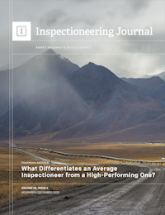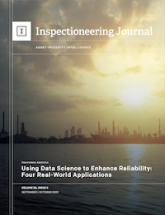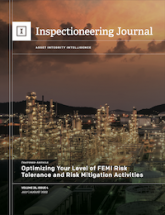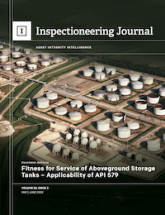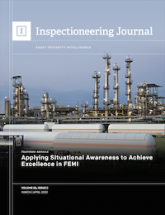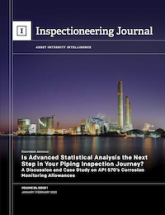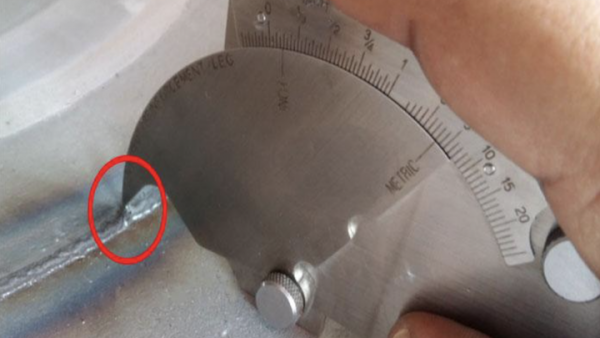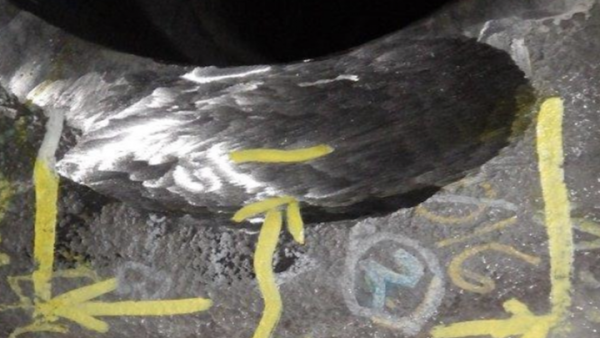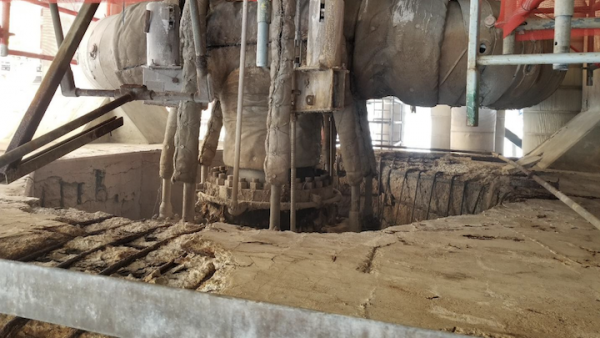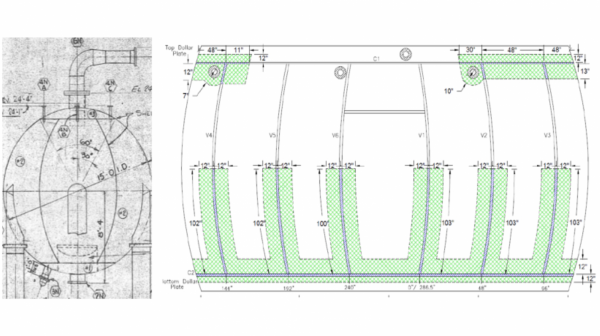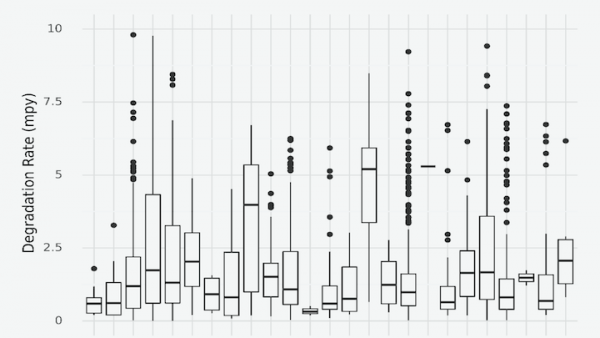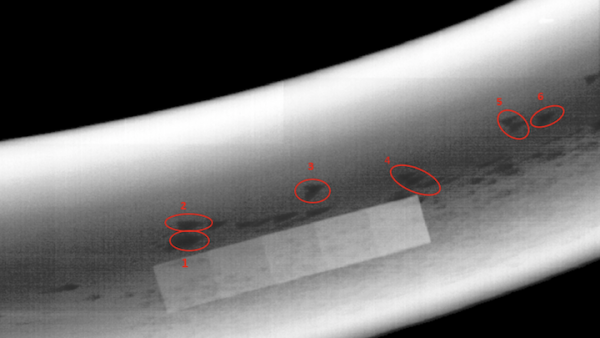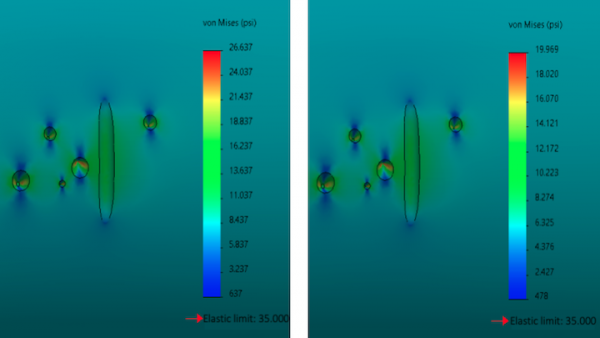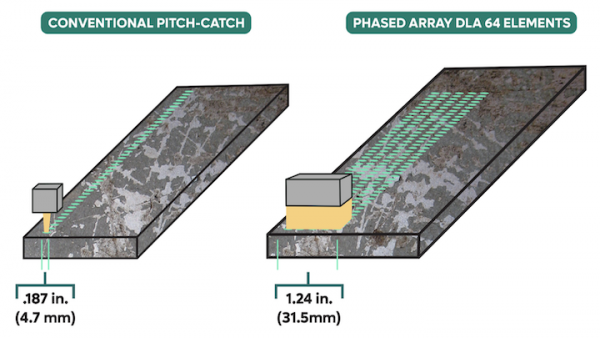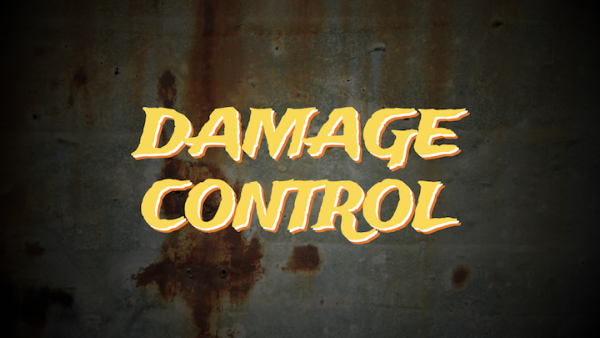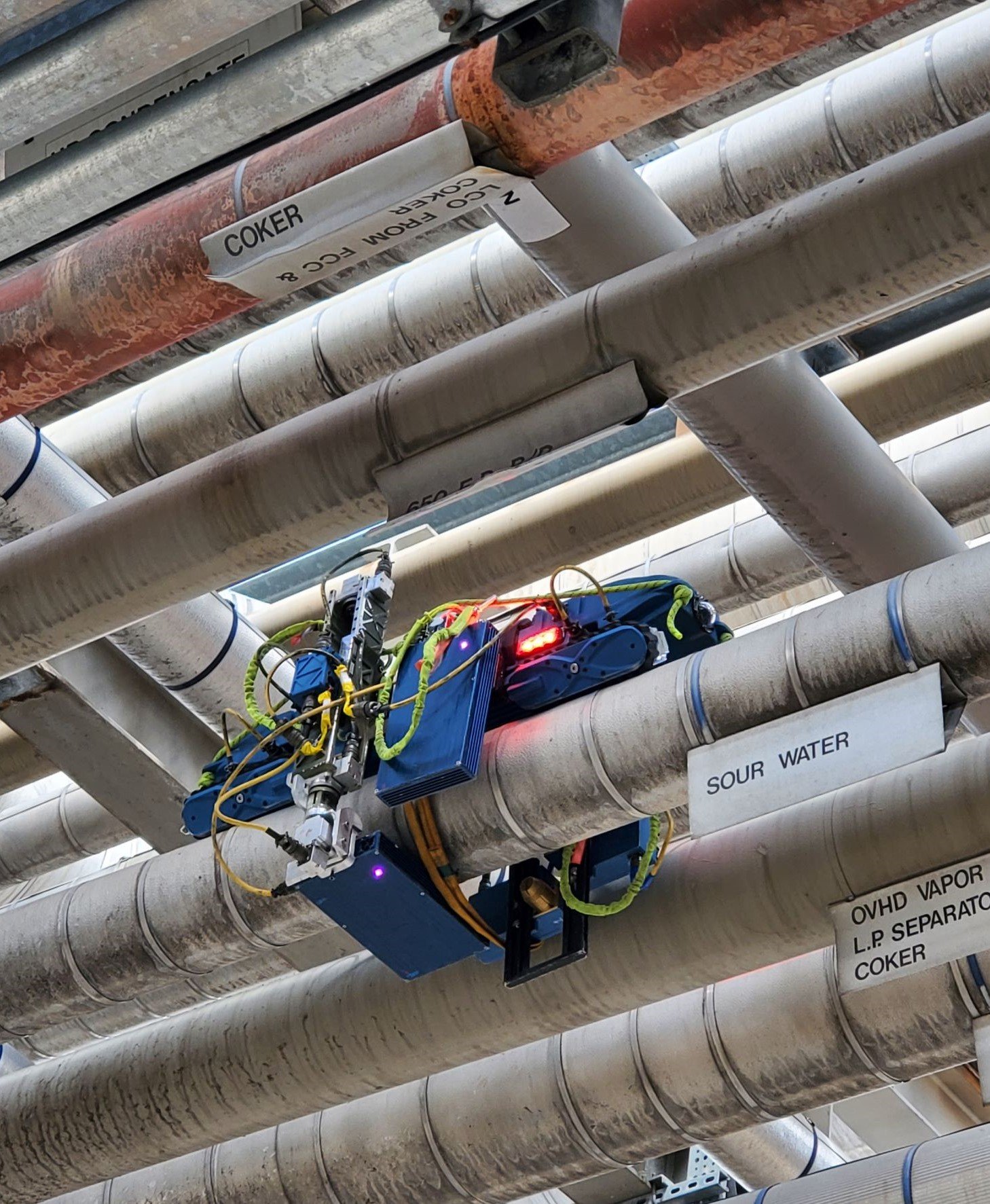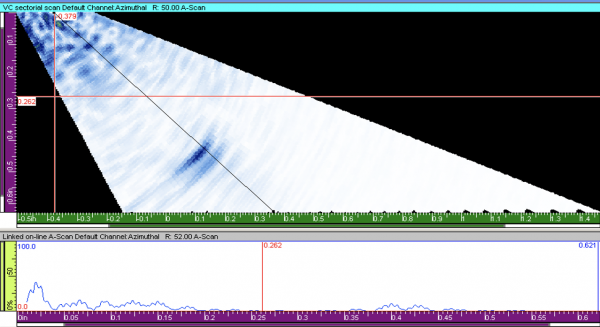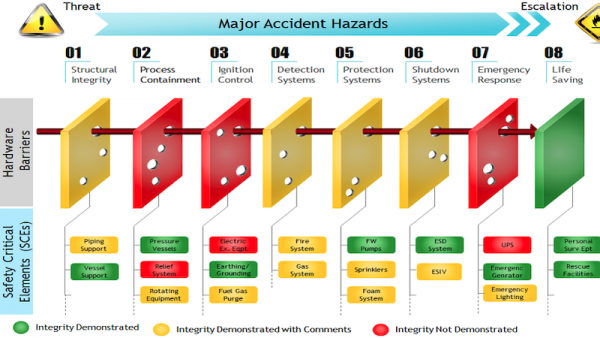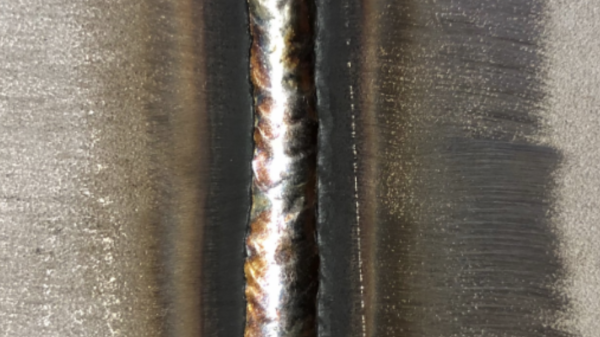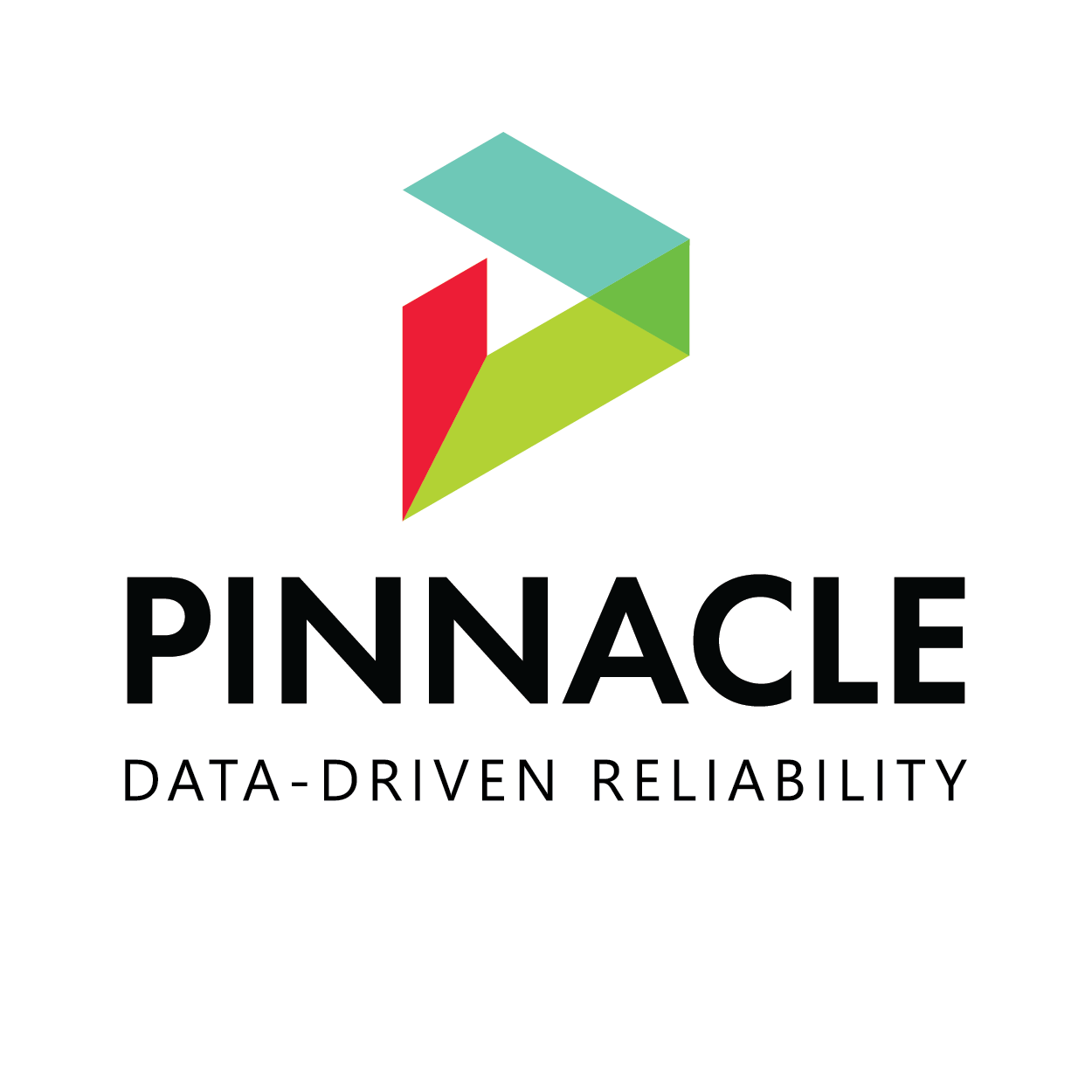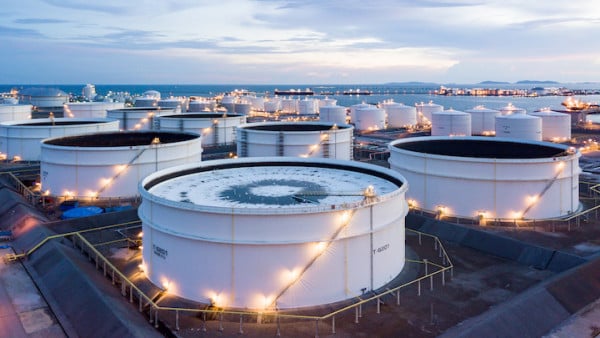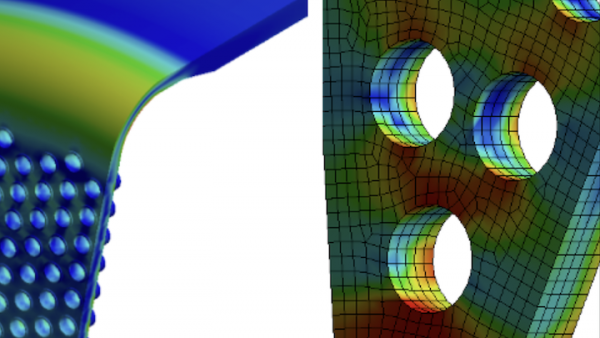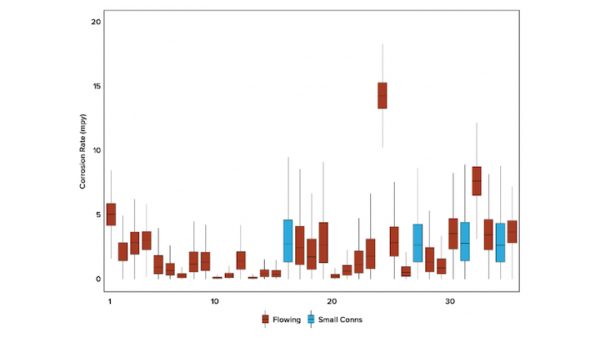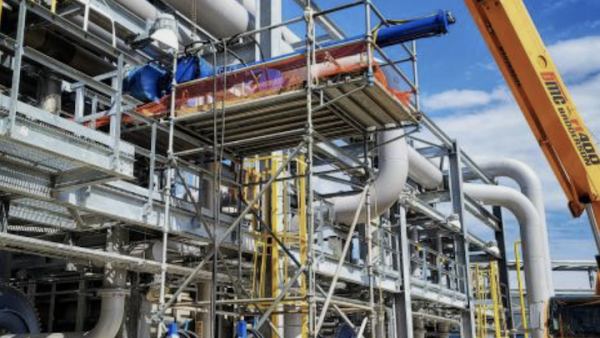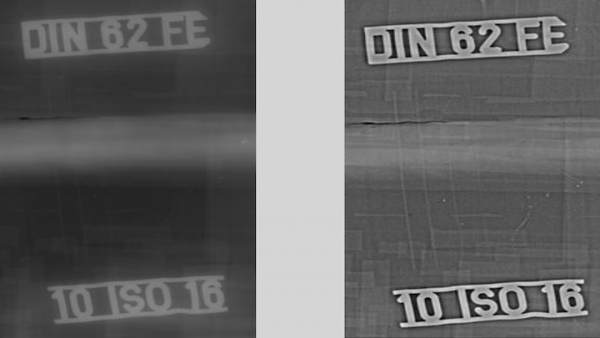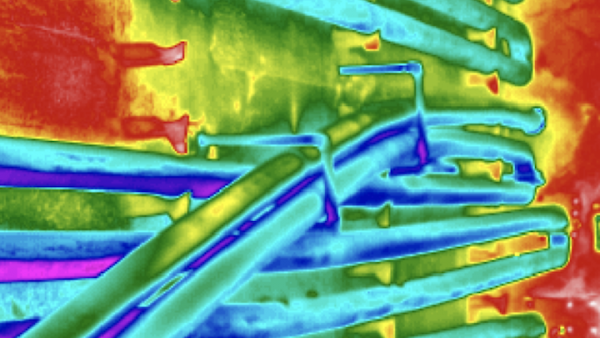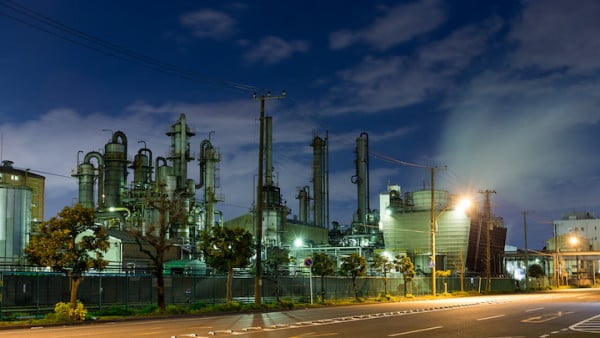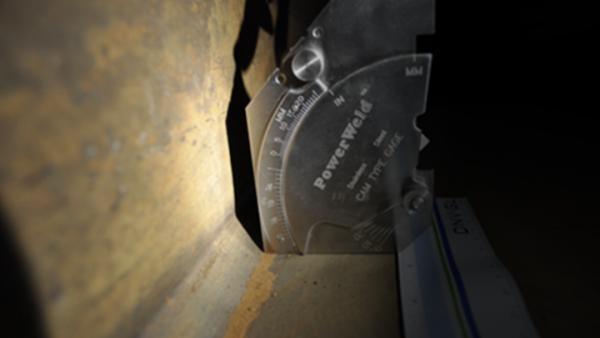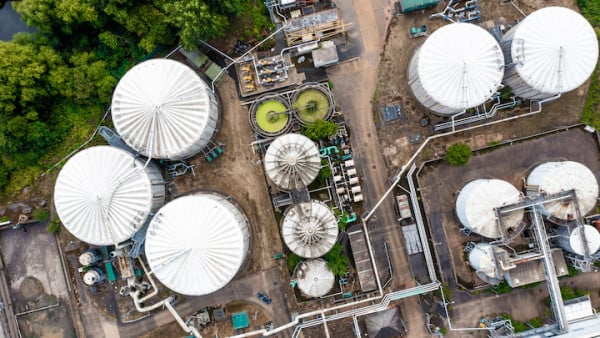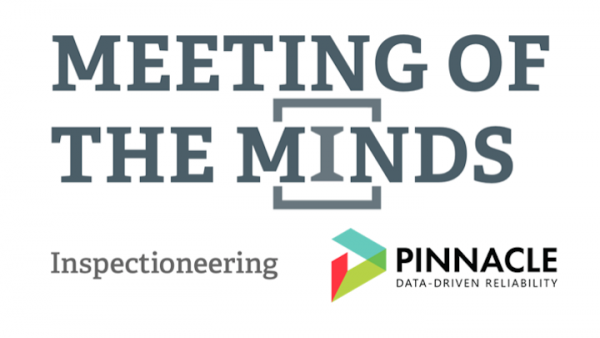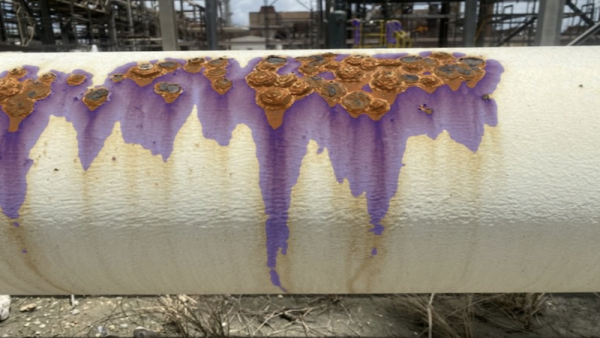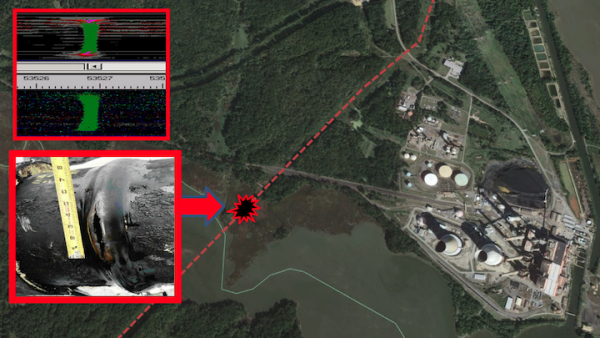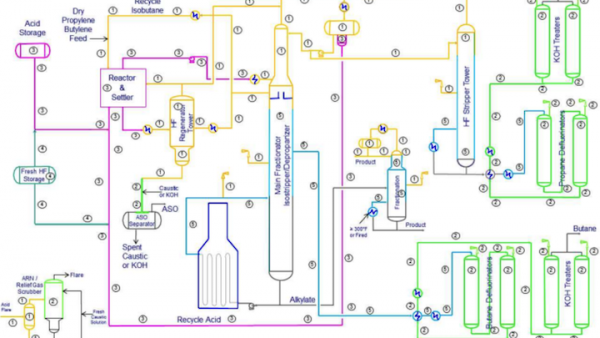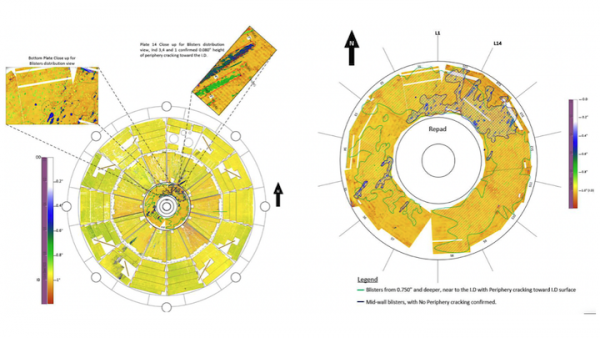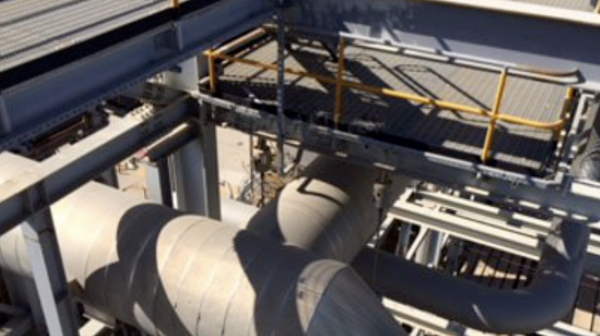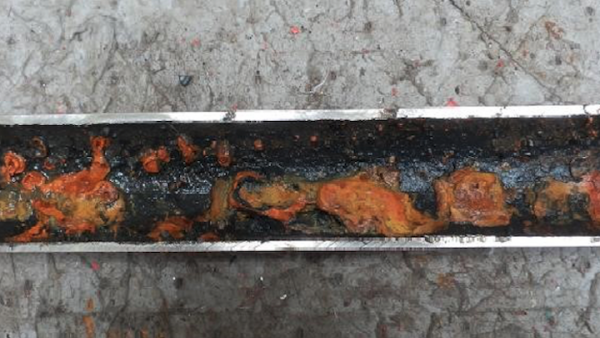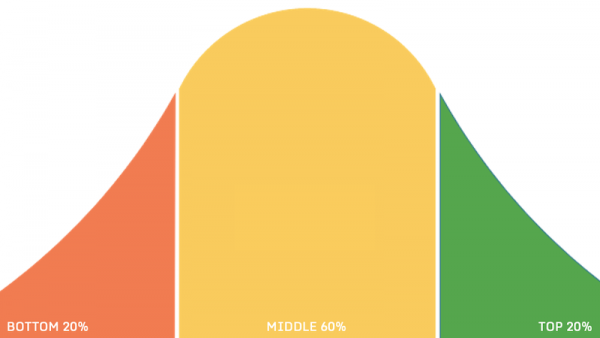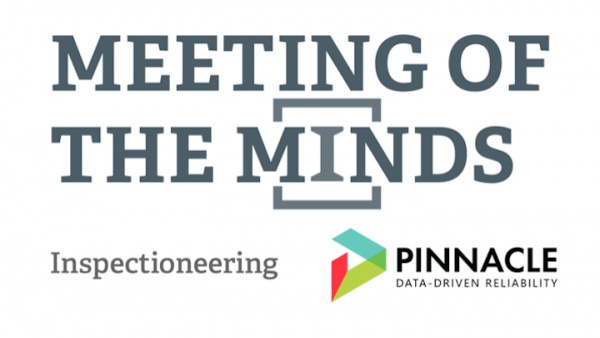An Inspection Planning Process for Equipment Susceptible to Sulfide Stress Cracking
Damage Control: High-Temperature Creep Assessment
Development of a New Assessment Tool to Improve Asset Integrity Management
The Power of Image Analytics in Mitigating Corrosion
What Differentiates an Average Inspectioneer from a High-Performing One?
Comparing Conventional AUT and Phased Array AUT Corrosion Mapping
Damage Control: High-Temperature Creep Detection
FFS Forum: Remaining Strength Factors
Qualitative RBI – Simplified Screening Tool for Asset Management
Texas Storage Tank Owners: Are You Prepared for SB 900?
Understanding Microbial Corrosion - Part 1: Microbial Corrosion Damage
Using Data Science to Enhance Reliability: Four Real-World Applications
Challenging Baseline Inspection Paradigms for Oil & Gas Upstream Equipment
Damage Control: Stress Corrosion Cracking Mitigation
FFS Forum: An Interview with Ben Hantz, Chair of API 579-1/ASME FFS-1 Committee
Optimizing Your Level of FEMI Risk Tolerance and Risk Mitigation Activities
Process Heater Tube Temperature Monitoring Overview, Best Practices, and Examples
Special Emphasis Programs and TML Placement as Entry Points for RBI Implementation
The Evolution of Data Management in Mechanical Integrity
The Use of Risk-Based Inspection for HF Alkylation Units According to API RP 751
Damage Control: Stress Corrosion Cracking Assessment
FFS Forum: Laminations – How Big of a Problem Are They, Really?
Fitness for Service of Aboveground Storage Tanks – Applicability of API 579
Industrial Dogma and You – How, When, and Why to Perform Hydrogen Bake-out
Moving Forward with Professional Development – API ICP Recertification Requirements
Quantifying Refinery Reliability and Availability
Successful Volumetric Examination of a Modified Storage Tank Corner Weld
Applying Situational Awareness to Achieve Excellence in FEMI
Asset Integrity Case Study: Catalytic Reformer Support Structure
Case Study: Successful Use of Machine Learning to Model Degradation in Hydrocrackers
Creep Behavior of Sensitized AISI SS 347 Process Materials
Damage Control: Stress Corrosion Cracking Detection
FFS Forum: Nine Recommendations for Better FFS Assessments
The Four Dimensions of Mobility for Asset Integrity Management
Understanding API 579 – Fitness-for-Service: Where It’s Been and Where It’s Going
Choosing the Safety Factor in an ASME B31G Level 1 Evaluation
Damage Control: Wet H2S Damage Mitigation
FFS Forum: Unraveling Type A, B, and C Components
Is Advanced Statistical Analysis the Next Step in Your Piping Inspection Journey?
Overcoming Integrity Limitations of Conventional On-Stream Line Interventions
Probability of Detection in Digital Radiography Systems
Tri-Lateral Phased Array: A Novel Technique for Identifying Wet H2S Damage
2022 Inspectioneering Journal Article Index
A case study of advanced digital technology was assessed to resolve the challenges of internal coating of small diameter pipes by accurately and rapidly measuring pipe-end dimensions, and then matching end-to-end pipes with software-based analysis.
General guidance to provide a foundation to complete a solid inspection plan for sulfide stress cracking (SSC) as a result of the wet hydrogen environments.
There are a lot of potential threats that can interfere with maintaining adequate FEMI. Using situational awareness effectively to anticipate FEMI threats, understand them, and prepare the necessary steps can avoid a potential LOPC from the threat.
A study of the level of deterioration on a catalytic reformer support structure, the challenges involved, the solutions presented, and the aggressive schedule that was required to complete the project.
This article describes HTHA predictive modeling advances that are designed to demonstrate a direct integration with inspection such that modeling and inspection can be leveraged together in a way never done before.
This study found that a machine learning model was able to predict degradation rates for a hydrocracker unit more accurately and with a smaller margin of error compared to current industry practices.
An investigation was conducted to challenge the paradigm that baseline inspections must be done for all piping and other static mechanical pressure equipment. This article introduces a new approach to baselining practices.
A finite element analysis (FEA) was performed on five different models of varying configurations as an approach to establish best practices in the choice of the most appropriate factor of safety, depending on the type of metal loss.
Utilizing automated ultrasonic testing (AUT) for corrosion mapping to detect and quantify damage can play an important role in an effective MI program. This article compares two common off-the-shelf AUT technologies used for corrosion mapping.
The influence of sensitization on creep response of hydrocracker feed fractionator fired heater tubes made of AISI Type 347 stabilized steel after service exposure of around 20 years is investigated.
Part 2 of this Damage Control series on high-temperature creep discusses engineering evaluation methods that can be used to predict the remaining creep life of components. Comparisons between the Larson-Miller Parameter and the MPC Omega are offered.
Traditional inspection methods used to detect internal corrosion and corrosion under insulation (CUI) in piping and pipeline assets can be time-consuming and costly. With ART, you’ll discover CUI detection best practices that can help save you up...
A focus on typical damage morphology and inspection methods used to identify and characterize high-temperature creep including examples of creep damage and in-service failures to offer insight into this complex damage mechanism.
Part 2 of the three-part series on stress corrosion cracking (SCC) that examines common engineering and FFS methods that can be leveraged to understand and evaluate the propensity for an existing form of SCC to lead to loss of containment.
This article provides an overview of some of the more common forms of stress corrosion cracking (SCC) with a focus on effective inspection methods for detecting these forms of cracking.
This final installment of a 3-part series on SCC mitigation will provide practical, actionable steps to improve long-term equipment reliability through design, fabrication/welding, heat treatment, maintenance/repair, and process operating practices.
This edition of Damage Control will offer practical steps to mitigate different forms of wet H2S damage and help to minimize long-term inspection and maintenance costs related to wet H2S damage.
The pursuit to develop and validate phased array/time of flight diffraction (TOFD) transducers and corresponding wedges to service high-temperature inspections with the hope to discover reliable, convenient, and cost-effective alternatives.
To improve their implemented AIMS program and streamline the process of assessment, Saudi Aramco has developed an in-house AIMS assessment tool referred to as the Integrity Management Assessment Tool (IMAT).
After extensive application research, development, and testing, a technique has been developed that eliminates the need for backing gas for purging. It also provides a cost-effective system for welding the entire weld with high integrity.
The latest edition of the API 579-1/ASME FFS-1 Fitness-for-Service Code was released at the end of 2021. It seems like a good time to have a conversation with the Chair of that committee, Ben Hantz, to get his perspective on the evolution of FFS.
As one of the simpler API 579 FFS assessments, there are relevant criteria to check that are necessary to assess and evaluate laminations.
Discussion on the new Annex 9J procedure with examples using the Part 3 exemption curve, the 9J General Procedure, and the 9J Simple Procedure.
This article discusses some of the common fitness-for-service (FFS) issues plant engineers in the chemical and refining industry are facing and a handful of recommendations on how to improve them.
A closer look at the evolution of remaining strength factors (RSF) from its mention in early papers to the latest edition of API 579.
Pinnacle's data-driven reliability framework ensures the right data is fueling the right intelligence, helping you make confident, strategic decisions.
Component type is important when assessing the applicability and limitations of a particular assessment (Part and Level) to a particular component. This article explains the evolution of component type definition over the years.
The assessment procedures in API 579 may also be applied to pressure-containing equipment constructed to other recognized codes and standards. The author will examine the application of these procedures to aboveground storage tanks.
Our proprietary furnace tube inspection system, FTIS is an ultrasonic inspection technology capable of rapid, automated fired heater coil inspection in refinery fired heaters. The data captured by our furnace tube inspection system is...
The wealth of knowledge that can be incorporated into internal standards makes them an ideal resource for internal training initiatives and allow organizations to maximize the return on their investment in the standards program.
The convergence of IT and OT helps to streamline processes while providing access to the full picture of asset conditions, thereby enhancing risk mitigation, diagnostics, analytics, anomalies, and recommendations.
Shedding some light on the realities of hydrogen diffusion in the context of repair planning and equipment management and helping answer the age-old question, “Do I have to bake this out?”
The application of a detailed design-by-analysis method using ASME Sec-VIII Div-2 confirms field-observed ratcheting and fatigue type failures in the tubesheet due to the complex cyclical thermal-mechanical loading encountered during operation.
Applying advanced statistical analysis methods will provide owner/users with a RAGAGEP-accepted method for analyzing corrosion monitoring data while also integrating the latest improvements in inspection capabilities.
ICP has worked with industry leaders to ensure that certified personnel are meeting the demands that the industry expects. Through professional development, workers can hone and expand their skills to become better and more efficient workers.
It is important to seek the optimum FEMI risk tolerance and understand how to manage risks by optimizing your risk mitigation strategies. Locating the FEMI "sweet spot" on the risk curve will achieve the best return on our FEMI investments.
Traditional line interventions either utilize a single isolation point or are utilized in conjunction with bypass lines. A double block and bleed (DBB) replaces the need for using three separate line interventions to perform the same function.
With the advent of digital technology, image processing can be done in digital radiographs which can be used for automated detection and quantification of defects. It is important to know the system's limitations and the probability of detection.
Leveraging and combining the correct inspection tools on complex problems can yield the best overall data and understanding of actual conditions.
Inadequate consideration of corrosion and material degradation of many older facilities has complicated the implementation of modern-day RBI programs. This article presents a case study of a heat exchanger with such a design.
A case study on utilizing the Quantitative Reliability Optimization (QRO) methodology to help better evaluate equipment risk and predict future product availability.
Two common challenges that can be aided by the guiding principles of API 580 are implementing a special emphasis program for CUI and managing the efficiency of TML/CML placement.
Resulting from developing a 20-year nonintrusive inspection strategy, a successful experience is presented using a volumetric examination on a modified storage tank shell-to-bottom weld, known in the industry as corner-weld.
Texas legislature unanimously passed Senate Bill 900 (SB 900) which goes into effect in September 2023. It mandates that ASTs with a capacity of over 21,000 gallons must protect the ground and surface water. How prepared are you?
Earlier this year, Inspectioneering and Pinnacle co-hosted their 9th “Meeting of the Minds” roundtable discussion with a select group of leading MI experts. This year's focus was on data collection, data organization, and data analysis.
A changing workforce means an increased need to digitize AIM technology, including data capture and analysis, to facilitate remote work requirements and more efficient methods in a digital market.
This article discusses two use cases of how advanced visual data capture and image analytics can be used across multiple industries to drive better reliability decisions.
From 2010-2020, more than 30% of the pipelines involved in spilled incidents had at least one ILI that collected data at the point of the accident. In September 2021, the third edition of API Std 1163 was published. What is new? What is important?
Based on the current 5th Edition of API RP 751, this article is to help clarify where RBI can be used to extend inspection intervals for piping and equipment in an HF Alkylation Unit, and where it is prohibited.
Within one unit, TriLat combines the power of two probes containing three angle beam sets to identify and quantify cracking at early stages. The result is inspection speeds up to ten times faster than traditional AUT systems, depending on probe size.
An assessment of the vibration behavior observed and recorded on a pre-flash column overhead piping system and the strategic methodologies used based on a proactive troubleshooting technique.
An informative discussion with David Osage, President and Principal Engineer at The Equity Engineering Group, regarding the recent update to API 579/FFS-1, Fitness-for-Service, and why it's important to our industry.
Worldwide, microbial-induced corrosion and biofouling are a challenge to the oil and gas industry. Part 1 of this series reviews simple methods for identifying post-construction MIC damage, biofouling, and mitigation and the microbes that cause it.
Companies have developed detailed programs for managing wide range of assets. However, unsustainability negatively impacts effectiveness of these programs. Reach out to us on how we can address sustainability through digital transformation.
While data science has the power to revolutionize the reliability industry, it will only do so with strong guidance from SMEs. This combination enables facilities to develop solutions to challenges based on each method’s unique strengths.
Are you an Inspectioneer? Are you a high-performing Inspectioneer? See where you fit on the performance bell curve and compare the different attributes that comprise a high performer with how you carry out your duties.
Inspectioneering and Pinnacle co-hosted the 8th bi-annual Meeting of the Minds with a select group of mechanical integrity experts from across the industry. The meeting focused on major projects in equipment integrity and reliability.
